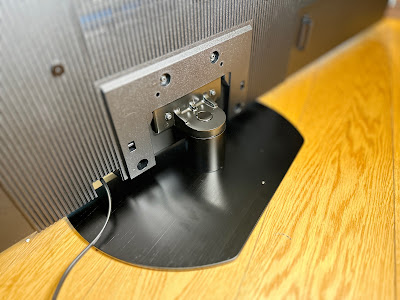I have two main pet peeves when it comes to tech. If you've read a few of my reviews you've probably picked up on what they are; firstly - little lights. I hate little lights, blinking, red, green, yellow, blue or otherwise. I don't need a light to tell me if something is on or off. I know if it's on or off because it works or it doesn't. If you insist on having little lights, at least give me the option to turn them off if I don't want them.
Second peeve - and this is a biggie - laptop cameras. Laptops cost a lot of money. In fact, most laptops cost a lot more than your average smartphone. So why are their cameras usually so much worse than those on your average smartphone? It's 2022. We don't leave the house anymore. We need to put our best face forward to the world. Give us a decent camera.
As it turns out, there's an easy alternative - especially for Apple users.
You may not be aware the latest version of MacOS gives you the ability to choose your iPhone as your default camera - you don't even have to set anything up, thanks to a feature called Continuity Camera it'll just appear in your list of cameras when recording a QuckTime movie, FaceTiming or joining an online video call. You can even use your iPhone's microphone if you like. (This works both wirelessly and if the phone is plugged in, by the way)
The trouble is, your iPhone is in your pocket. Or sitting on the desk. To use it as a webcam, you need it front and centre, at the top of your screen. That's where the Belkin iPhone Mount with MagSafe for Mac Notebooks comes in.
It might be the most innocuous-looking accessory I've ever tried, yet it might also end up being one of the most useful.
When you first remove it from the box, it appears to be a simple, rubberised disc. On closer inspection, once you turn it over, you'll discover two fold-out attachments; First, a fairly standard ring grip - much like many people already use to help keep hold of their handsets with one hand or to prop their phone up for watching video or gaming.
The second attachment is much smaller - a very narrow ledge.
The whole thing is MagSafe compatible, so it easily attaches and detaches from any iPhone, gen-12 or later. That pop-out ledge then allows you to attach your phone to the top of your MacBook screen in exactly the position required for all your video needs. This means you're no longer restricted to the built-in camera and you don't need a separate, external webcam either.
Outstanding.
The inclusion of the ring grip is a real bonus. I've never been a fan of this kind of attachment before as it required either a dedicated ring grip case, sticking a ring grip attachment to your existing case or even worse; directly onto your phone. Thanks to MagSafe, this convenient holder/kickstand isn't a bulky, permanent addition - it's just something you can slip on and off as required.
And that could very well be the end of my review. A durable, well-designed, MagSafe accessory that performs its main task effectively, with an absolute minimum of fuss. Fantastic.
But wait, there's more.
The problem with the Belkin iPhone Mount with MagSafe for Mac Notebooks is it's only for Mac Notebooks. Right? Well...
While it's true the little fold-out ledge is only wide enough to fit on the top of a MacBook display, Continuity Camera works on iMacs too. What I've discovered is the fold-out ring grip is also stable enough to hold your iPhone in place at the top of the much thicker iMac display.
Bonus.
But wait...
Not only does the Belkin iPhone Mount with MagSafe for Mac Notebooks fit nice and securely on Mac Notebooks but it'll also hold your iPhone pretty snugly in place on most other laptop screens too. What's the point of that? Windows PCs don't have the Continuity Camera feature. They often have really crappy cameras though, so it'd sure be great to use that awesome iPhone camera instead.
And you can.
There are many apps out there to enable this functionality - some of them giving you the option to fine-tune your image, even swapping between different lenses. I've tested this out with an app called Camo - you just need to open it on both your laptop and your phone and you're good to go.
See how versatile this little Belkin mount can be?
Oh, but wait...
What if you don't have an iPhone? Although you might have a phone with an equally brilliant camera (or perhaps even better) no MagSafe means no go. Right?
Actually, I love MagSafe so much I decided I wanted it on any phone I use - and over the course of a year of tech reviews I might end up using ten different handsets or more. Most of them won't be iPhones. Luckily, I've discovered you can buy separate magnetic rings you can stick on the back of any phone (or preferably its case), essentially converting into an unofficial MagSafe device.
So yes, I've attached an Android phone to a Windows laptop using the Belkin iPhone Mount with MagSafe for Mac Notebooks. Worked brilliantly.
Do I need to get a life? Maybe. Is the Belkin iPhone Mount brilliant? Definitely.









-9.jpg)
-8.jpg)
-12.JPG)
-16.jpg)
-4.jpg)
-11.jpg)
-10.jpg)





-11.jpg)
-12.jpg)
-8.jpg)
-18.jpg)
-14.JPG)
-16.jpg)
-17.jpg)
-10.jpg)






-3.jpg)
-5.jpg)
-6.jpg)





